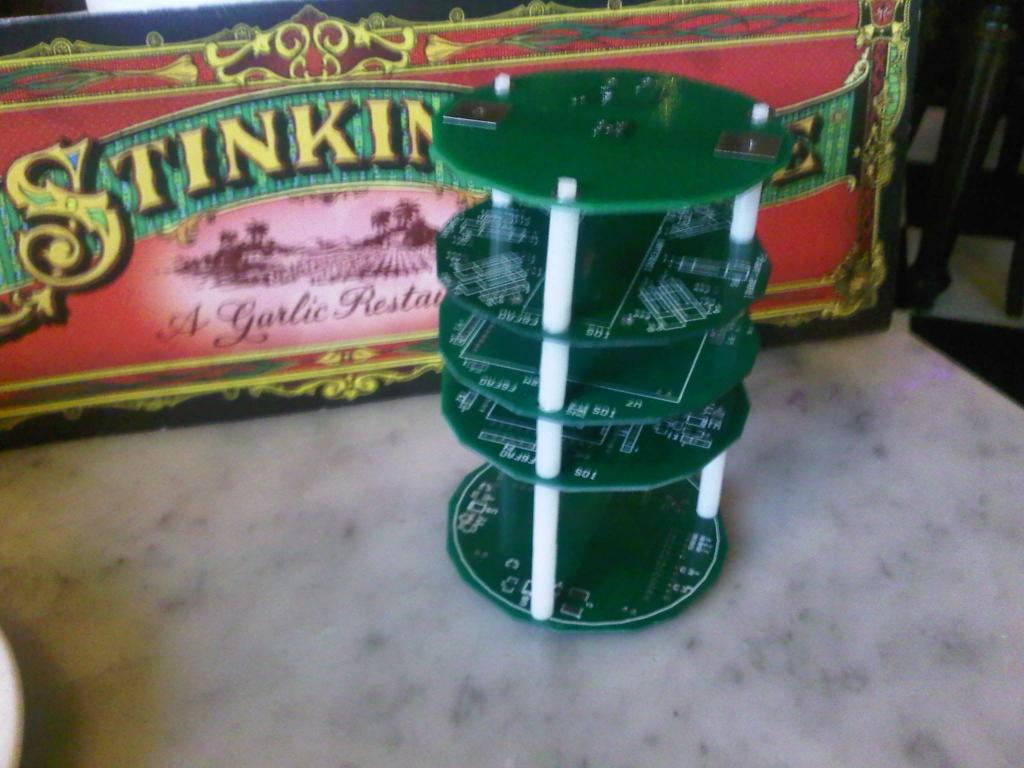A few years ago one of our writers had the idea to launch Bloggy into space. He was going to do all the work and just needed the money to pay the company, Interorbital, a very reasonable-sounding amount, so it was on.
My only real question was, "The knock on these guys is that they keep cashing checks but they never actually launch anything. What makes you think they will this time?"

Bloggy in spaaaaace.
Well, he had no answer for that and it was more rhetorical than anything, no one can predict the future, but he was doing all of the real work so it was worth a shot, and he had a really cool idea. Bloggy in space and
a homemade ionospheric detector, launching it into space, and applying sonification to convert the signals to MIDI so that any HAM receiver can play space 'live' or via our website. We're converting the ionosphere to sheet music, basically.That's right, music made by space. I was in. 5 years later, still no launch, though.

Sandy remains on the schedule, so that is nice, and he detailed his work here exhaustively, and we all learned a lot watching his progress, but it has looked like a pipe dream this entire decade. Even the James Webb Space Telescope thinks they are moving pretty slow.

Science 2.0 satellite - Project Calliope - by Alex Sandy Antunes. This is the 0.9 prototype, Sandy gave it to me as a gift during our lunch after the AGU meeting in December, 2010. If he breaks the other two, and they ever actually stop selling and starting sending, I'll have to ship it back to him. It sits on my library shelf in my office now.
But what they haven't done is make any real enemies.
Mars One, the hyped mission to colonize Mars, has made that error, in one Dr. Joseph Roche, an astrophysicist at Trinity College in Dublin. When they first started getting media attention, he threw his name in there, he told Elmo Keep at Medium, and watched as uncritical claims like that they had 200,000 people mostly went unchallenged by journalists.
When you hand Interorbital a few thousand dollars for a satellite in 2009, they just thank you and assure you it will launch next year. They don't keep asking you for more money, and Roche was concerned that the bubble sorting for candidates involved 'points', and you could get points by buying Mars One stuff or raising money for them. Basically, you could pay your way into being one of the 'top' candidates.
Strange ethics, yes, plus, that's peanuts. Isn't this thing going to cost about 60 billion dollars? How can nickel and diming people for a few hundred people for t-shirts matter? And real astronauts are vetted. If you haven't seen "The Right Stuff", you really should, actual astronaut selection is nowhere near as fun, it's a movie, but it should be that way, or something close - not an online application and a fee.
At Medium, Elmo Keep has new details on what seems to be the space travel version of vaporware - the $6 billion television agreement they were working on has disappeared, the advisor they had says it is 100 years in the future, not their projected date of 2025. Keep really details the obstacles that they apparently never considered before firing off press releases.
With Interorbital, I never thought it was completely bogus, we have been launching satellites into space for 60 years, I was just skeptical. With Mars One I never thought it was going to happen for a moment, it's a 140 million mile trip to a hostile climate with no technological road map fronted by some people in Holland no one ever heard of who have no facility, no investors, and no clue how to do anything except ask universities for help figuring it out. NASA can't get to Mars without losing half their spacecraft, people with no experience are going to send humans counting on the miracle of capitalism to make it happen?
So I am more surprised that anyone bought into the hype outside Vitamin D supplement salespeople, who had to be excited because they could pretty much close up early if anyone boarded a rocket to Mars - colonists are sure not getting any sunshine there.
I have to wonder if the 2.5 people at Mars One even know that.
H/T Real Clear Science




Comments